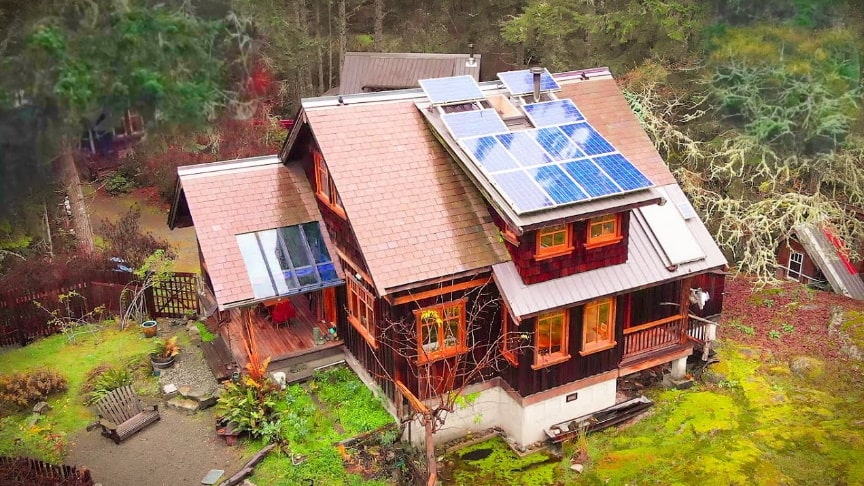This is the 100-mile house! The goal with this build was to source and salvage as many materials as possible from within a 100-mile radius to reduce the carbon emissions associated with transporting building materials, to re-use materials in order to reduce the environmental impact of building with new materials, and finally, to support local builders and craftspeople by paying them a fair wage for their work.
source/image(PrtSc): Exploring Alternatives
Briony Penn is a well-known artist, writer, naturalist, and educator. She has been working in the field of conservation for 40 years through her work as a lecturer at UVic, as the author of several books, and with over 500 published articles on environmental issues.Of course, when an opportunity came up for Briony to build a home, she took the responsibility very seriously. The 100-mile house idea was a way to help her reduce the impact of building her home.
She built with the smallest footprint possible (within municipal regulations) with approx. 1000 square feet of living space and she shares the land with her sister who also built a small home next door. Together they share the driveway, well, septic, and electricity, and they also protected the rest of the 5-acre property since it is a biodiverse area with several species of endangered wildflowers found there.
Advertisement
Of course it was impossible to source absolutely everything from within 100 miles, but Briony and her team of builders did an impressive job with this green building! They sourced recycled insulation and they salvaged slate shingles, wood floors, wainscotting, sinks and bathtubs, and even worked with a salvage tug boat to retrieve and mill logs that constantly wash up on the BC shoreline. To reduce the impact of the concrete they had to use in the foundation slab, they worked with a concrete specialist to come up with a mix that would include fly ash, which is a by-product from coal and steam plants.//Exploring Alternatives











